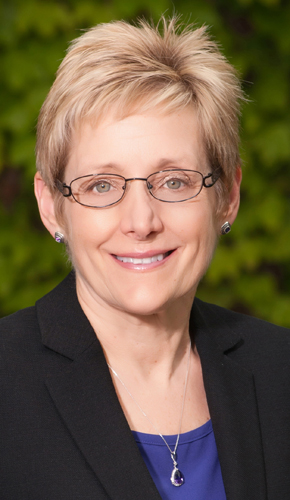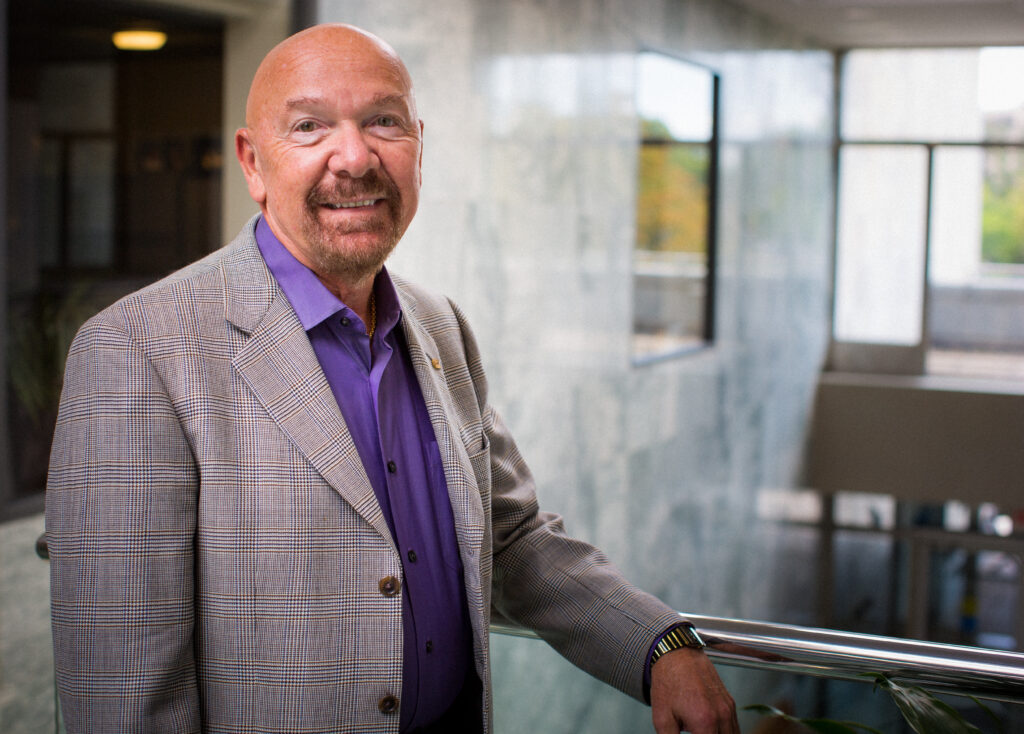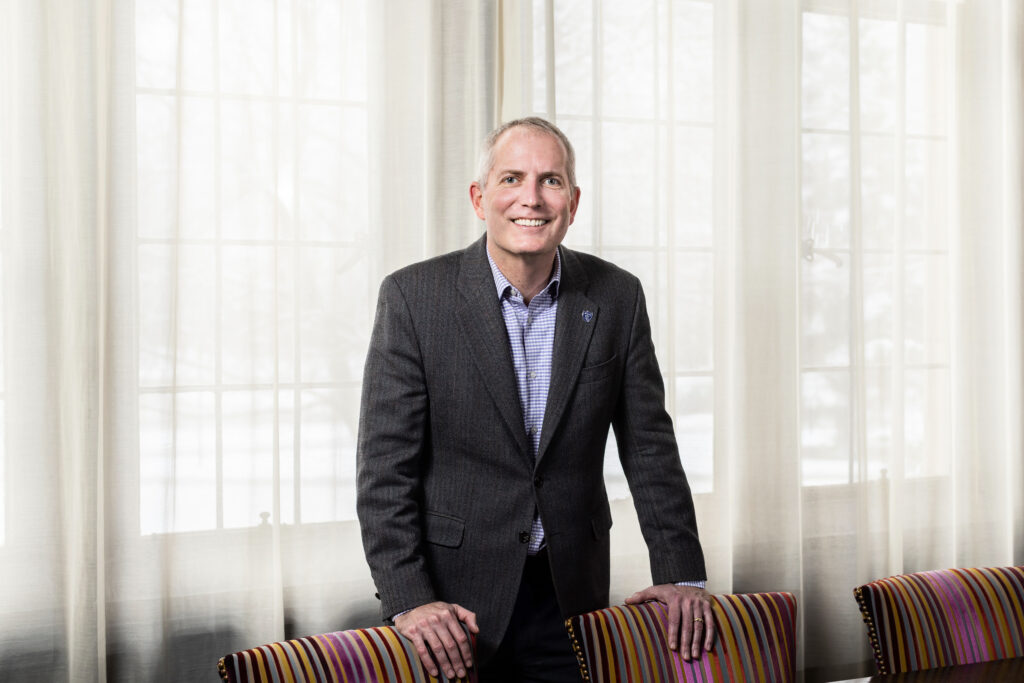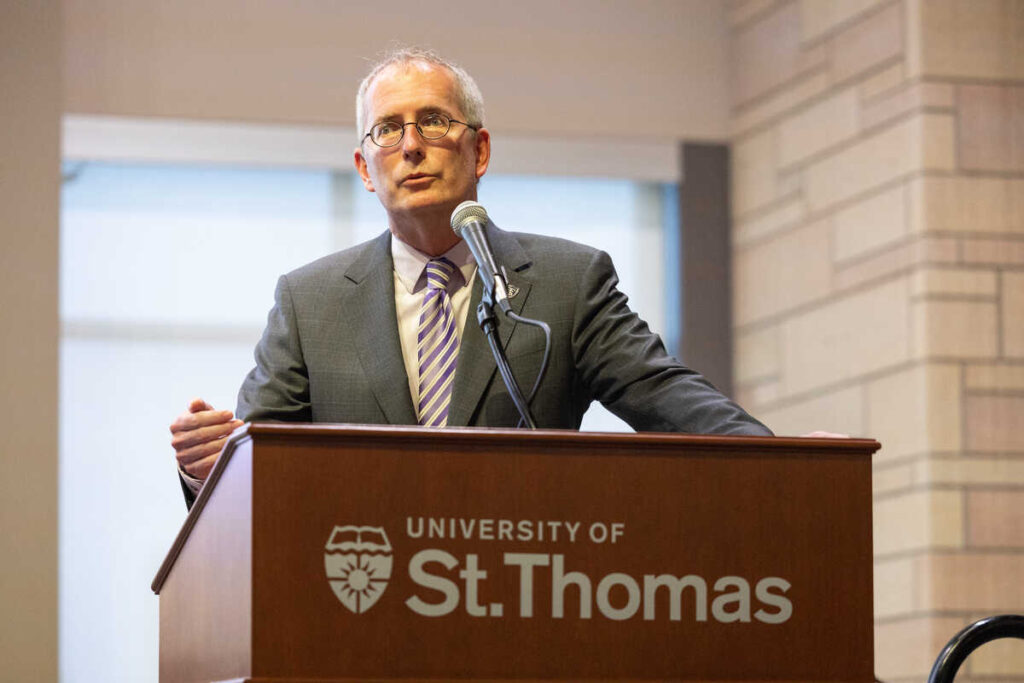 You cannot read a newspaper, magazine or blog these days without finding a story about soaring student debt in the United States. The stories are loaded with numbers: $1.2 trillion in debt, individual debt loads exceeding $100,000 and three-year default rates of 14 percent.
You cannot read a newspaper, magazine or blog these days without finding a story about soaring student debt in the United States. The stories are loaded with numbers: $1.2 trillion in debt, individual debt loads exceeding $100,000 and three-year default rates of 14 percent.
The numbers are big and scary – to those of us who run the university, to parents and to students like Mary, a St. Thomas junior who expects to graduate with $40,000 in debt.
But what do these numbers really mean? Is total household debt soaring? No. Total household debt peaked at $12.6 trillion in 2008 and is now $11.85 trillion, but the composition of household debt has changed. Student debt increased from 4 percent to 10 percent of the total, and home equity loans decreased from 9 percent to 4 percent.
Is student debt soaring for everyone? No. In particular, do these numbers reflect typical undergraduate student borrowing? No. A small percentage of student borrowers, who are often interrelated, are making a disproportionate impact on these numbers. For example, students attending for-profit institutions represent 13 percent of the higher education population yet hold 30 percent of the total student debt. Similarly, graduate students represent 16 percent of the higher education population yet hold 40 percent of total student loans.
Does this mean undergraduate student debt is not of concern at St. Thomas? Definitely not! However, you also must dig deeper into our undergraduate student borrowing to understand the full story. Recently, we looked at just over 4,000 undergraduates who attended St. Thomas since matriculating as freshmen and graduated in 2011-12, 2012-13, or 2013-14. One-third of these graduates had zero student loans.
When we separately analyze the two-thirds of students who borrowed, the average debt is $37,731. However, aggregate metrics again distort the story. Eighty percent of borrowers took out $40,000 or less in total loans and 11 percent borrowed more than $60,000. Without the 11 percent of “extreme borrowers,” the remaining have an average loan of $27,761. Thus, a typical graduate with student debt will have a median payment of $314 per month for 10 years, requiring an annual salary of about $38,000 to pay the loans affordably. The median salary range reported by students graduating in 2014 and working full-time or in the military was $40,001-$45,000.
I am frequently asked what we are doing about student debt at St. Thomas. We are instituting programs to more proactively educate students and families about the ramifications of their borrowing and dissuade them from excessive borrowing. Our objective is to ensure our graduates leave with debt burdens that are manageable based on their potential earnings.
We also continue to focus on raising additional scholarship funds, and we appreciate your assistance with this. Annual gifts help to hold down student debt and endowed scholarships live in perpetuity to do the same thing. In fiscal year 2015, St. Thomas awarded $88.6 million of financial aid to undergraduate students. Of that total amount, annual gifts and endowment funded $4.7 million.
At the same time, we seek to reduce costs. Our flexible pathways strategic priority task force is considering new programs and options to provide additional pathways for students to enter St. Thomas and complete a degree with more flexibility and less cost.
We are inspired every day by students like Mary (not her real name), who is paying for her education with St. Thomas financial aid, some of which is funded by gifts and endowment, two on-campus jobs and student loans.
“I decided to go to St. Thomas knowing my parents would not be able to help me,” said Mary, the third of four children. “I was so excited about St. Thomas that I thought, ‘This will work itself out.’”
And it has. “I have had two incredible years here,” Mary said. “I just hope other students will have the opportunity to go to St. Thomas.”
Read more from St. Thomas magazine.







